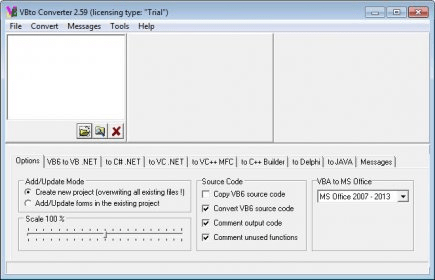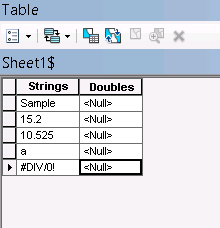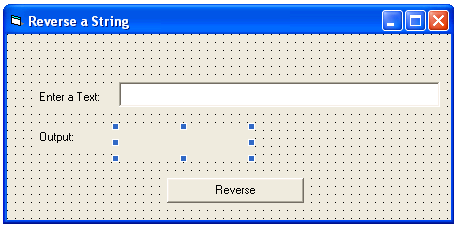

At the prompt, enter 078971633x (for the book's ISBN) and then click
#Convert string to double vb6 code
You can find all the code for the examples in this chapter on the Web at. 12 For intCntr = 1 To intLength 13 txtResult.Text = Mid(txtMyString.Text, intCntr, 1) _ & txtResult.Text 14 Next intCntr 15 Refresh 16 17 End Sub 11 `Concatenate each character to the beginning. The Len() Function 01 Private Sub OldVersion_Click() 02 Dim intLength As Integer `Length of the string 03 Dim intCntr As Integer `Loop counter 04 05 `Initialize the txtResult.Text string and then 06 ` determine the length of txtMyString.Text 07 intLength = Len(txtMyString.Text) 08 txtResult.Text = "" 09 10 `Loop through the first string one character at a time. LISTING 12.1 12LIST01.TXT-A VB5 For.Loop That Reverses a String Is reversed by either the old or the new string-reversing subroutines. The code in Listing 12.2 delivers the same result with the new StrReverse()įunction, with no loops and only one simple command. To step through each character in the string and then build the new string in reverse Listingġ2.1 shows the code required for Visual Basic 5. The sample program in Figure 12.1 uses two ways of reversing a string. Perform a string function on the null data field. The problem happens when you takeĪ null data field from a database and assign it to an internal variable or when you Visual Basic defaults all internal variables to valid values-numeric variablesĭefault to zero, and strings default to empty. These null values will cause problems for the string functions.Ġ2 txtMyString.Text = "It's raining cats and dogs."

Most databases, such as MicrosoftĪccess and SQL Server, allow fields to be null or undefined until they're initialized. Important to distinguish this from a null string. Notice that line 3 of the following code is an empty string of length zero. The TextBoxes shown in Figure 12.1 were initialized during the form's load event.

New string functions, expect to refer to this chapter several times before you uncoverĪll that can be accomplished with these new functions. Seasoned VB programmers can now replace entireĬustom functions in their programs with a single line of code. Visual Basic 6 comes with a lot of new string functions, many of them vast functionalĮnhancements to the native language. The first task when working with strings is to be able to locate parts of a string Changing Data Types with the Conversion Functions.Controlling Data Types with Typecasting.Changing a String's Case with UCase() and LCase().Combining an Array of Strings with Join().Creating a Sublist from an Array of Strings with Filter().Splitting a String into an Array of Strings with Split().Using InStr() to Search for Characters Within a String.Using Mid() to Return Characters from Inside a String.Truncating Strings with Left() and Right().Determining a String's Length with Len().Reversing the Order of Characters in Strings.If you don't want to use this method, you could create a method to check whether the property is null and return the default value or property value.Using Visual Basic 6 - Ch 12 - Working with Strings and Typecasting We could use the tertiary operator to check whether the property is null and set the default value. More details, please refer to this article: When the finaldt is empty, if you want to set the default value, you could refer to the following code: class Pet

LastName = cc.LastName = null ? "bb" : cc.LastName,īesides, according to your code, I don't think you can use Convert.ToDouble() method in the LINQ query statement, you might meet the following error: LINQ to Entities does not recognize the method 'Double ToDouble(Int32)' method, and this method cannot be translated into a store expression.Īs for this issue, you could refer to the following threads:ĭefaultIfEmpty(), first, we need to make sure the finaldt is not null. You could refer to the following code: var query = from cc in context.UserTablesįirstName= cc.FirstName= null ? "aa": cc.FirstName, //check whether the property is null or not. Yes its giving error for null values in data container,is there a way to handle this null? within below code:Īs for this issue, you need to check whether the value is null or not, then convert it to double type.


 0 kommentar(er)
0 kommentar(er)
